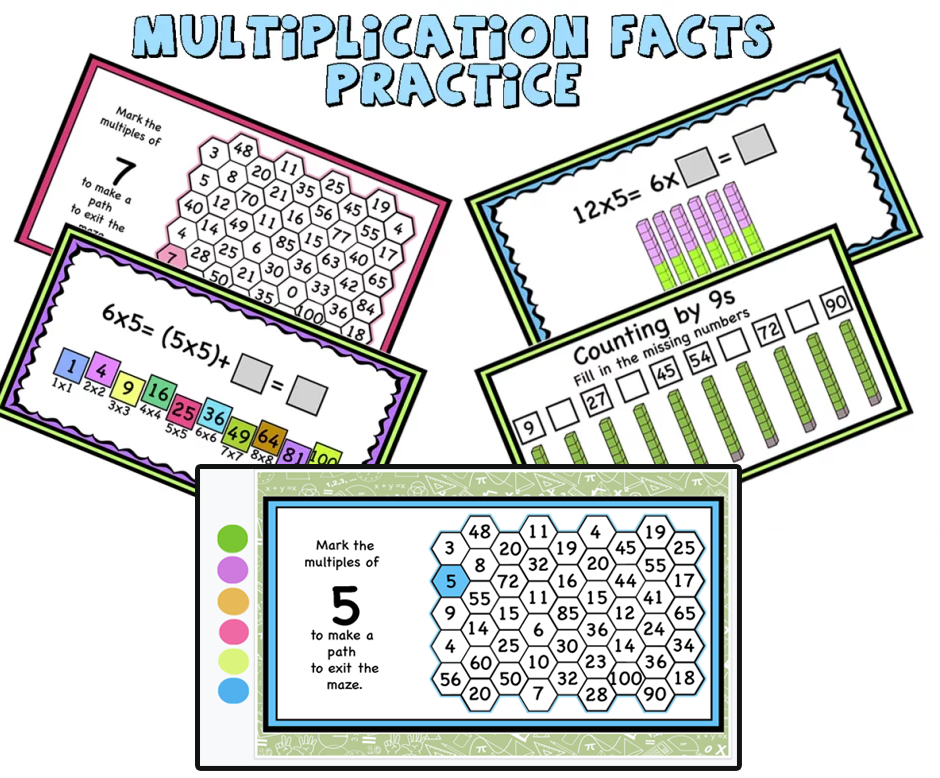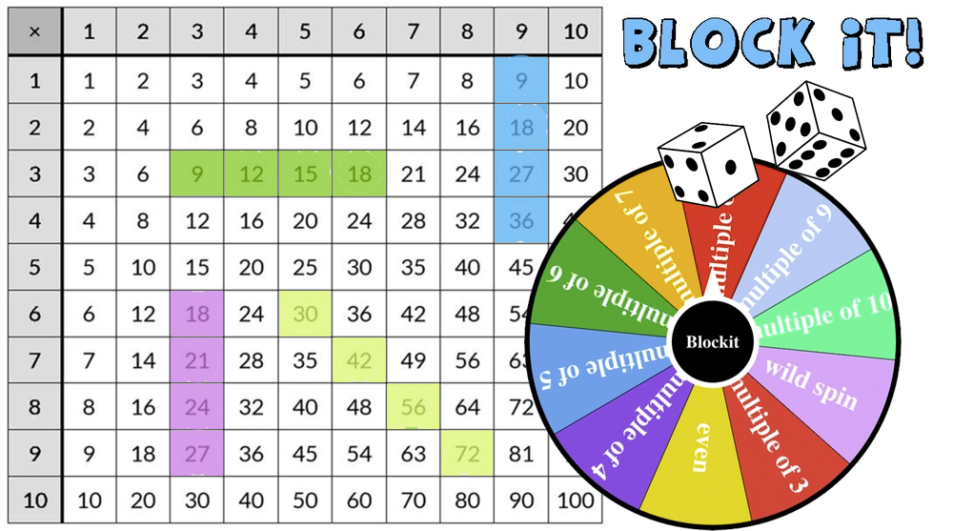Block it! One of our most popular games is now digital. If you are already familiar with the game scroll to the end of the post to play digitally.
Play is a powerful learning tool. As we all know, children learn best through games and that is the reason I always try different games with my children and my students to help practice math skills in a fun and exciting way.
Practicing multiplication facts is often a boring task for students. However, gaining automaticity with the multiplication facts helps students understand and practice other concepts, like division, fractions, and more.
I wanted to find a game that is fun, offers a lot of practice, and most importantly can be played by all students, a game that is not testing their individual skill but gives all students an equal chance of winning. Unfortunately, I was not able to find one since all games related to multiplication facts are in the style of flashcards and they work more like a test than a game. So I decided to design one.
I came up with a competitive, simple game to help practice the multiplication facts. I tested the game with my own children ages 8 and 11. The game can be played in pairs or with a team of three or four students. The goal of the game is to practice solving one-digit multiplication problems 1-10 or 1-12 while discovering patterns and relations on the multiplication table.
Material
- A print out of the multiplication table/grid 1×10 or 1×12 will be used as the board. (provided)
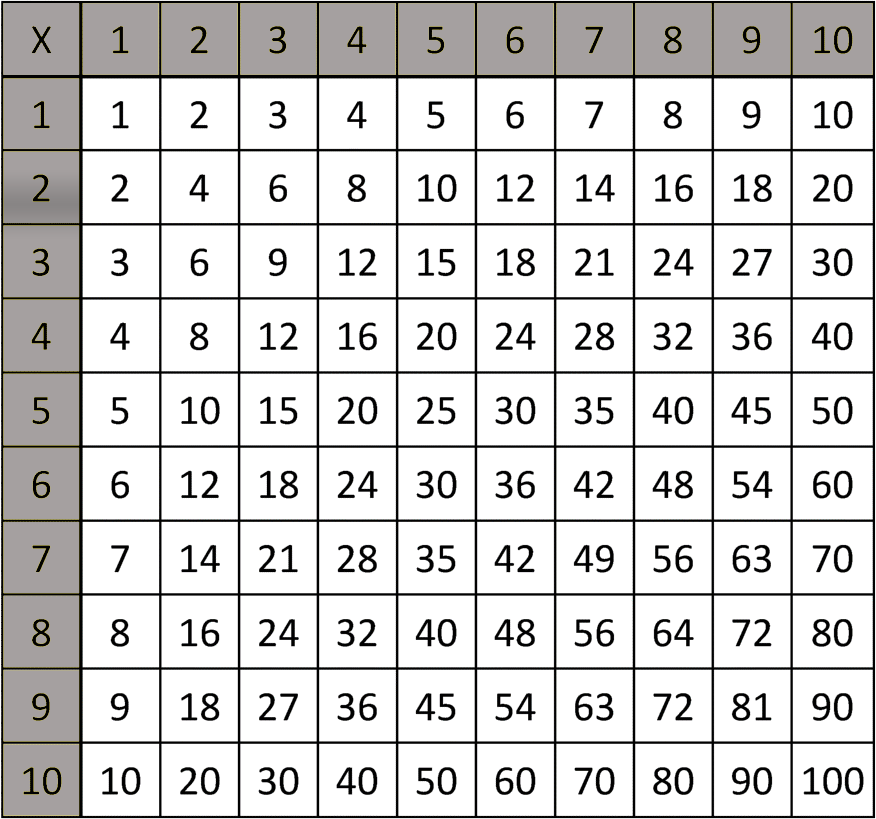
2. Two dice 10 or 12 sided. You can find these on Amazon or any board/card game stores. Learn how to build your own dice here. If you don’t have dice a deck with only number playing cards or Uno cards works well too. If you are using a 12×12 table use the king and queen as 11 and 12.
If you are using the 10×10 grid you need the side 10 dice and if you are using the 12×12 you need the side 12 dice. These dice are being used a lot for the Dungeons and Dragons game so you can find many on Amazon.

Instructions
The players take turns rolling two 10-face dice. They multiply the numbers they get and they mark the answer on the multiplication table. The table itself helps them find the answer. Their goal is to mark mark/color four connected tiles vertically, horizontally or diagonally.
The wild roll!
The number one on both dice is special! It is the wild roll that can become any number on the dice. If you roll one on one dice you can choose any number from the dice to replace it with. For example, if you rolled 1 and 9. You can do any number 1-10 or 1-12 (based on the grid you are using ) x 9. Which gives you the freedom to choose any number from the table of 9. If you are lucky enough to roll the number 1 on both dice then you can color any square on the grid, since you get to choose both the numbers to multiply. Of course, it needs to be a non-colored square. The wild roll gives the players the opportunity to apply more strategic thinking and also to avoid the frustration of rolling numbers that give products that are already colored.
The winner is the first player to color four tiles connected horizontally, vertically, or diagonally. The players also need to block the opponents from getting four connected tiles by coloring tiles that block their way. The game ends when the first player gets a block or it may continue until there are no four squares connected left. Then they count their blocks.
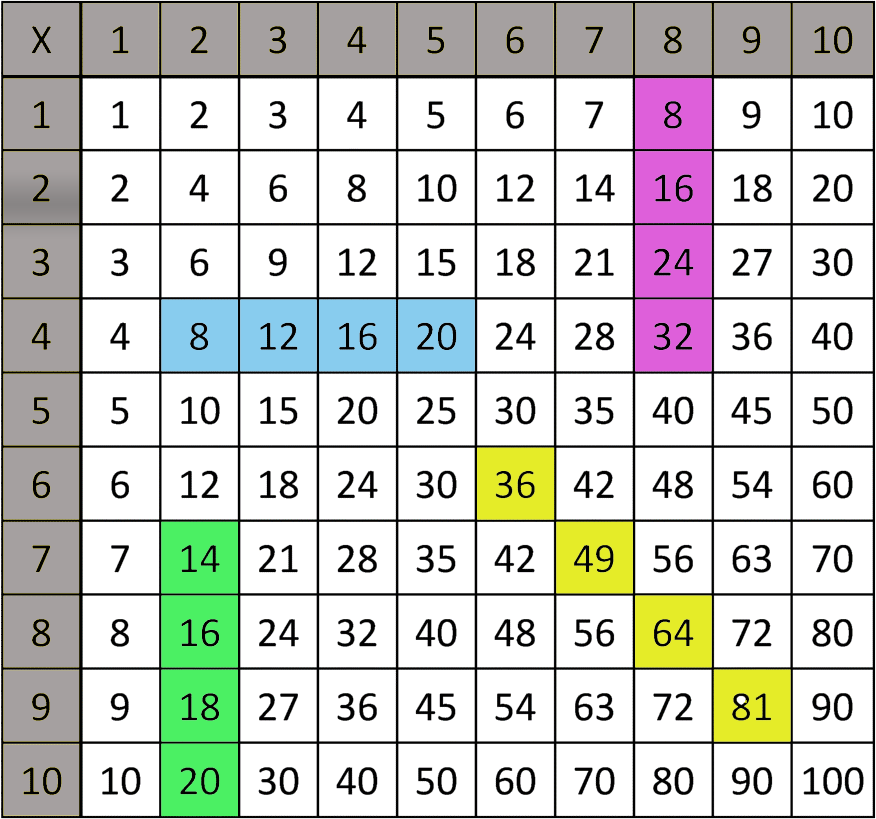
Since the numbers on the table repeat (for example, 15 appears twice on the table) the players get to choose which one of them to color based on the squares of the opponents or their colored squares.
This game offers a lot of fun practice and can be played by all the students since they don’t need to know the answers from before. It gives the students a chance to get familiar with the multiplication table and find patterns that will help them remember the multiplication facts. The students also learn factors and prepare for Division.
Save paper
If you like this game and you think that your student will play it often you can laminate the times-table printout and use whiteboard markers (in different colors for each player) instead of colored pencils. It is better if the students don’t color the whole square with the marker (it gets messy) but instead draw lines on it or circle the number with their color. This way it is easier to clean for a new game. Having laminated timetables in the classroom is always a good idea since they can be used in many activities or as go to reminders for the students.
A great Math Station
I played this game with my whole grade 4 class using a really big laminated poster of the multiplication grid. We also used two large foam dice which was not necessary but it was fun. The class was divided into two teams and the students of each team took turns rolling the dice in pairs. The game was ongoing for a few days. We played at the last 20 minutes of the day for a few days, and the table was posted on a wall so the students ended up planning strategies in their free time. After that, I left the table on the wall and turned it into a math station for pairs or groups of four. It became the most popular station!
A simpler game
As I mentioned before you can use a 10×10 grid or a 12×12 grid to play the game. However, you can also use a smaller part of the grid for lower grades or to practice at home with younger children. When my son was learning his multiplication tables 1-6, I enlarged and printed the part of the grid that includes 6×6 and used two 6 sided dice. It is simpler and the game ends faster but it is still good practice. You can also use 8×8 part of the grid and two 8 sided dice.
You can also use the game board as a photo and play on a tablet or any other device. Use the marker setting to color the tiles and digital dice.
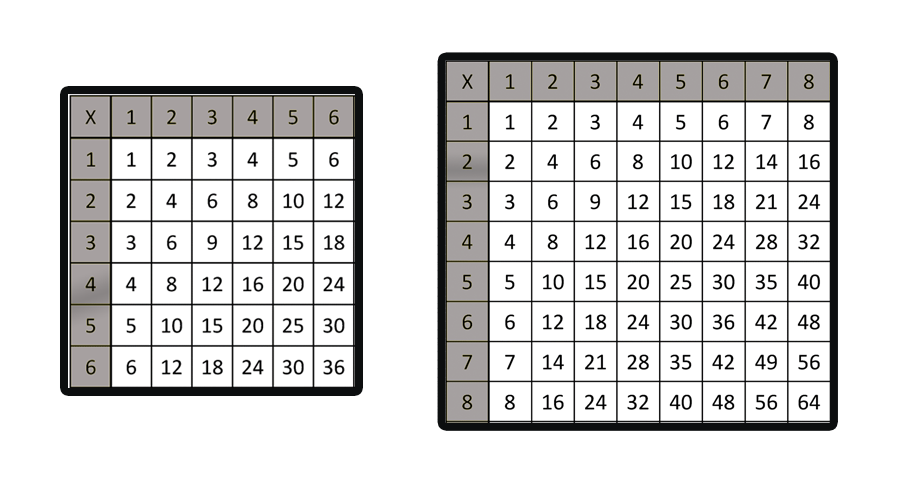
I hope you find our ideas useful. Happy playing and happy teaching.
Here are the print and play versions of the game.
Print and play_blockit_6x6 Download
Print and play_blockit_8x8 Download
print_play_blockit_10x10 Download
blockit_instructions Download
Find the google slides version here
Play Digitally
Two player digital game
Play here or use this link https://games.mathcurious.com/block_it_multi.html
Single-player digital game
Find the single-player game here
For more fun multiplication facts practice check out our collection of printable and digital activity cards here. Activities that promote fluency, not memorization.
